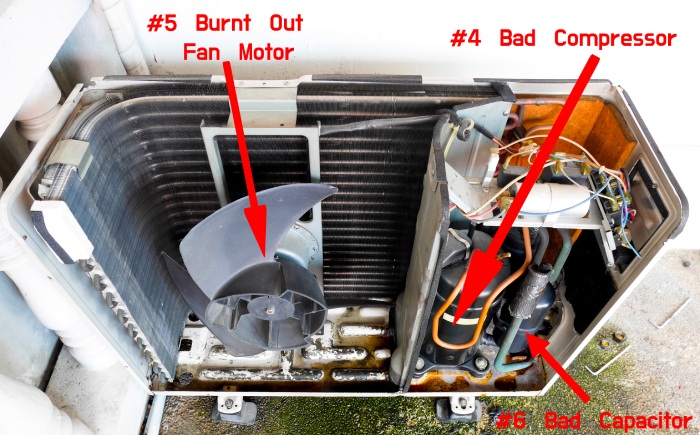Air conditioning systems are marvels of modern technology, designed to keep our living spaces comfortable regardless of the soaring temperatures outside. However, there are moments when the serenity of a cool indoor atmosphere is abruptly interrupted by a malfunction. Picture this: your outside AC unit is humming away diligently, but the interior is still sweltering. What’s the disconnect? Why does the outside unit seem to be doing its job while the inside languishes in discomfort? Let’s clarify this perplexing predicament that many homeowners encounter.
When your outdoor air conditioning unit appears operational, yet the indoor environment remains steamy, it’s crucial to shift your perspective and consider the possibility of an AC disconnect. This disassociation might indicate underlying issues that merit attention. Understanding the intricate relationship between the outdoor condenser and the indoor evaporator can help in diagnosing the problem.
First, let’s delve into the primary components of a central air conditioning system. The outside unit houses the compressor and the coil, responsible for expelling heat and circulating refrigerant. On the other hand, the inside unit comprises the evaporator coil, the air handler, and, often, a furnace. Both need to function synergistically to maintain a comfortable indoor climate. When one functions correctly and the other does not, it can cause frustration and confusion.
So, what are the common culprits for the air conditioning disconnect? One common issue to consider is a malfunctioning thermostat. This small but mighty device serves as the brains of your cooling system, communicating your desired temperature to the system. If the thermostat is miscalibrated or experiencing electrical issues, it may not signal the indoor unit to activate, resulting in a stagnant, hot environment.
Another potential problem could stem from the ductwork. Obstructions, like dust bunnies and debris, can significantly impair airflow efficiency. When air cannot circulate properly due to blockages, even the most robust outside unit cannot deliver the desired results inside. Inspect the ducts for any visible issues and consider professional assessment to ensure optimal performance.
The refrigerant is another element worth examining. This coolant circulates through both the indoor and outdoor units, absorbing heat from inside and releasing it outdoors. If the HVAC system is low on refrigerant due to a leak or improper charge, it could result in inadequate cooling. In this scenario, while the compressor is working tirelessly outside, the inside unit may be unable to cool effectively—leading to that discouraging disconnect.
Let’s not overlook the importance of regular maintenance. Filters that are clogged or dirty can stifle airflow and diminish a unit’s cooling efficacy. It’s often a good practice to change or clean air filters every few months to ensure smooth operation. Neglecting this simple task could lead to significant challenges, especially during peak summer months when HVAC systems work hardest.
Furthermore, the age of your system could also play an influential role in efficiency. HVAC units typically have a lifespan ranging from 10 to 15 years. As they age, components wear down, decreasing overall performance. Older units may struggle to operate as effectively as their younger counterparts. If your system is on the older side, it might be worth evaluating if repairs are better than schedule maintenance and replacement.
Another aspect to consider is the electrical connections. With time, wires can degrade or connections may loosen, preventing proper communication between the indoor and outdoor units. An electrical issue might manifest as the outdoor unit functioning while the indoor system fails to respond. A certified technician’s expertise will be invaluable in diagnosing potential electrical faults.
Now that we’ve covered common issues, let’s pivot our focus toward solutions. If you suspect the thermostat might be causing issues, try reprogramming it to see if this resolves the problem. If uncertainty persists, consider consulting a professional for a thorough inspection. They can gauge whether further action is necessary, bringing you closer to a solution.
In instances where duct blockage is the suspect, cleaning ducts could significantly enhance airflow. Regular maintenance contributes immensely to prolonging the lifespan of an AC unit, ensuring it maintains its cooling power for as long as possible.
For those facing the refrigerant dilemma, remember that only certified professionals are permitted to handle refrigerant. If you suspect a leak, expert intervention is critical to ensure the system is charged appropriately and safely. This not only protects your unit but also safeguards the environment.
Maintenance is paramount. Establishing a routine check-up schedule with an HVAC technician can help catch issues before they escalate into inconvenient breakdowns. Professional cleaning, inspections, and routine checks can improve your system’s performance and efficiency.
In conclusion, while your outside AC unit humming may give the illusion of efficiency, a myriad of factors could be causing your indoor unit to underperform. Taking the time to understand the intricacies of your system facilitates better decision-making when it comes to troubleshooting issues. After all, maintaining your comfort in the face of summer’s searing heat is worth the effort. Know your system, care for it diligently, and enjoy the refreshing indoor climate that it promises.
